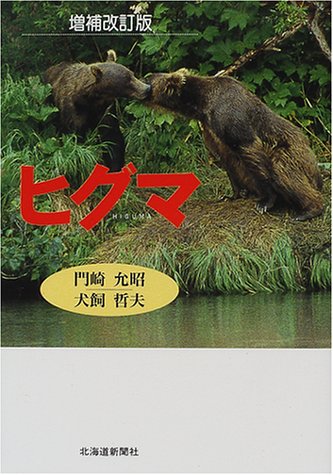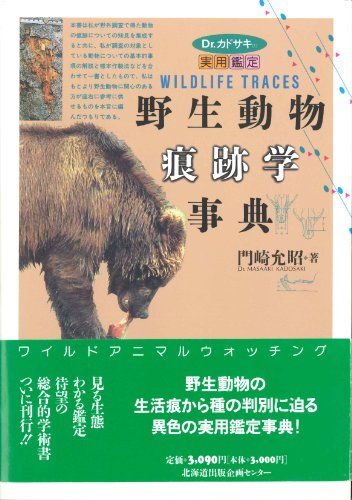3 0 0 0 OA 野生ヒグマによる人身事故の防止対策
- 著者
- 門崎 允昭 河原 淳
- 出版者
- 森林野生動物研究会
- 雑誌
- 森林野生動物研究会誌 (ISSN:09168265)
- 巻号頁・発行日
- vol.18, pp.50-66, 1991 (Released:2017-10-03)
The authors investigated 43 accidents resulting in injury or death due to attack by wild brown bears Ursus arctos, occurring in Hokkaido Japan in the 22 years from 1970 through 1991. Characteristics of bear attacks on humans and countermeasures to prevent injury are presented. Causes for attacking humans: Causes of bear attacks on humans can be divided into three main areas. (1) Attacks with an intention to eat humans: These occur when bears develop a longing to hunt, kill and eat prey, especially after a long time on a vegetable diet. (2) Attacks to drive away humans: These occur in the following cases. When bears desire to eat foods which human bring, farm products or livestock under human's care, or in protecting their territory or food. Attacks on hunters, i.e. bear's counterattack against hunter's attack on bears. This occurs (i) When hunters miss bears from close range. (ii) When a hunter chases a wounded bear, bears very often attack suddenly from a hidden vantage point. (iii) When a hunter shoots a baby bear before the dam, she will angrily attack the hunter. When humans encounter bears suddenly, bears attack humans without warning. In particular, a mother bear will attack humans for approaching. (3) Attacks for sport or excitement: Some young bears, especially those around two years old attack humans for sport or excitement. In some incidents the causes overlap, or in the middle of an attack the cause may shift to another motive. Type of bears involved in attacks: Bears attacking hunters are characterized as being over two years old and either sex, whereas attacks on people other than hunters are in most cases perpetrated by dams accompained by young, or bears of ages two to four years regardless of sex. Body part attacked: Bear attacks on hunters are usually directed at the head, then on the legs, body and neck in order of frequency. People other than hunters are usually attacked on the legs, head and neck, and body. Manner of attack: In late hibernation and directly after, bears attack humans largely using the teeth on all fours. At times other than the hibernation period, bears usually attack people by standing erect and using the claws. Bears with a history of attacking people will use the same method as used in previous attacks. Man-eating bears: Sometimes, bears will eat a man at the scene of the killing. In most cases after killing a man, the bear will drag the body to a safe place and strip the man naked or cover the dead body with soil, fallen leaves or chopped long herbs. Parts eaten: Portions of the human body which bears eat are largely muscles and protruding part such as nose, ears and penis. They rarely eat internal organs. Preventing injury: To obviate bear attacks on humans, hunters should avoid firing or pursuite which will lead to sudden counter-attack. Ordinary people should carry a sound-making instrument, such as a whistle or a bell, and a hatchet for self-protection when entering an area presumed to be a bears' habitat. While walking, people should blow or rattle the sound-making instrument, or raise their voices in order to avoid encountering bears unexpectedly. If people should encounter a bear and the bear approach them obstinately, people should not be overawed by the bear. They should chant a spell to admonish the bear for his evil intention of attacking a man, and to encourage themselves as the Ainus, the aborigines of Hokkaido, used to do. Another method is to shout at the bear with a loud voice. Such actions often cause the bear to leave. If a person runs to escape, bears are sure to attack them. Therefore, people should never run to escape, even if bears assume a threatening attitude. If a bear should deliver an actural attack on a person, they should respond with a blow of their hatchet on any part of the bears' body. This will make the bear flinch, and sometimes, give a chance of survival. Feigning death:(View PDF for the rest of the abstract.)
2 0 0 0 OA 2001年度に北海道で発生したヒグマによる人身事件4件
- 著者
- 門崎 允昭
- 出版者
- 森林野生動物研究会
- 雑誌
- 森林野生動物研究会誌 (ISSN:09168265)
- 巻号頁・発行日
- vol.28, pp.19-25, 2002 (Released:2017-10-03)
The first and third incidents occurred while the victims were collecting edible wild plants. The other incidents occurred when the victims were hunting bear. In the first incident, a 42 year old woman was killed instantly by the bear that was protecting its young. In the third incident, the lone eight year old male bear dragged the 53 year old man about ninety meters to a comfortable spot where the bear then proceeded to eat the victim's muscle tissue. These facts suggest that in the third case, the purpose of the bear attack was to eat the man. In the second and fourth incidents, the bear retaliated against being shot by the hunter. In the second incident a 70 year old man was left in a critical condition. In the fourth incident, an 81 year old man was killed instantly. The causes of bear attacks against people can be divided into three general categorys; to eat people, to repel people and to play with people. Three of the incidents are in the category of repelling people, the other incident is in the category of attacking to eat.
2 0 0 0 OA 北海道産ヒグマに寄生するマダニ類の年間動態
- 著者
- 小澤 良之 門崎 允昭
- 出版者
- 森林野生動物研究会
- 雑誌
- 森林野生動物研究会誌 (ISSN:09168265)
- 巻号頁・発行日
- vol.22, pp.29-42, 1996 (Released:2017-10-03)
A survey of the seasonal movement of the population of five species of ticks lxodidae collected from both wild brown bears Ursus arctos and their habitat yeilded the following results The smallest population of ticks except winter in both areas (on both the bears and in their habitat) was found to be in August due to dormancy under high temperatures. This was in common with all the five species. Ixodes ovatus population composed of only adults in both areas changed synchronously. Haemaphysalis megaspinosa population in both areas showed a lag of one month, because of the low prevalence of nymphs on the bears. However, there was found on abundent occurrence of nymphs and larvae in the bears habitat. The other three species (H. japonica, H. flava, I. persulcatus) in both areas changed irregularly because of the differences of developmental stages of ticks which compose each population and because of the prevalence of them to bears, respectiverly.
2 0 0 0 ヒグマ : 北海道の自然
2 0 0 0 ヒグマ : 北海道の自然
- 著者
- 犬飼哲夫 門崎允昭著
- 出版者
- 北海道新聞社
- 巻号頁・発行日
- 1987
2 0 0 0 ヒグマ
- 著者
- 門崎允昭 犬飼哲夫著
- 出版者
- 北海道新聞社
- 巻号頁・発行日
- 2000
2 0 0 0 七面鳥の後胸気嚢の欠如に関する発生学的研究
- 著者
- 門崎 允昭
- 出版者
- The Ornithological Society of Japan
- 雑誌
- 鳥 (ISSN:00409480)
- 巻号頁・発行日
- vol.24, no.97, pp.1-8, 1975
肺•気嚢系が解明されている鳥類の中,七面鳥だけが後胸気嚢を欠いており,この点特異的である。従って,筆者は七面鳥の後胸気嚢の欠如の過程を発生学的に観察した。後胸気嚢は通例第2PV,あるいはその近傍の気管枝(通例3次気管枝)から発生する気嚢であるが,七面鳥ではいかなるステージにおいても,これらの気管枝からは気嚢の発生が見られなかった。なお,第2PVは分枝を発生し,近傍の気管枝とともに腹気嚢の回帰気管枝と吻合することを確認した。ふ化後の七面鳥の2次気管枝は,その位置的関係からADs,PDs,PVs,PLsの4群に大別されるが,発生時期からも4群に大別するのが合理的であり,さらに同一群に属する気管枝の発生順序も肺内に近い方から順次発生することを確認した。前胸気嚢に交通している気管枝の中,第3AD以外の総ての気管枝,および腹気嚢に交通している気管枝の中一次気管枝以外の総ての気管枝は,いつれも気嚢から肺側に発生してきた.いわゆる回帰気管枝である。さらにこれら回帰気管枝のmain ductは,筆者が成鳥における肺の形態学的記載で,confluent bronchusとした部分に相当する。これらmain ductは通例,ガス交換能を有する呼吸細気管枝を欠いているので,発生的にも機能的にも気嚢の領域と考えられる。ふ化後の肺にラテックスを注入した鋳型において,鈍縁から肋骨面の前方部を経て内臓面の後方部にかけての気管枝に,一連の不連続面が往往見られるが,この部分が発生学的にはADsとPDs•PVsとの吻合面に一致することを確認した。
1 0 0 0 ヒグマ歯の年輪形成時期および歯の種類による年輪数について
- 著者
- 犬飼 哲夫 門崎 允昭
- 出版者
- 日本応用動物昆虫学会
- 雑誌
- 日本応用動物昆虫学会誌 (ISSN:00214914)
- 巻号頁・発行日
- vol.18, no.3, pp.139-144, 1974-09-25
- 被引用文献数
- 1 4
The age of Ursus arctos yesoensis was known to be determined by teeth annuli, but the number and clarity of annuli sometimes differed from bear to bear or between the different kinds of teeth obtained from the same individual. In order to examine the characteristics of teeth annuli, 2 bears of known age (No.5 and 7) and 6 bears of unknown age were employed. The age of the bears of unknown was estimated by examining J_1 and P_4 teeth, which exhibited clear annuli. The teeth of J_1,J_2,J_3,C, P_1,P_4,M_1,M_2 and M_3 of the lower jaw obtained from No. 7 bear and some others were analyzed for detecting morphological and numerical differences of annuli. The age estimated from the annuli of C was sometimes younger than the actual age by one year due probably to the delayed development of the canine. The annuli numbers observed in the other kind of teeth coincided with one another (Fig. 9-17). There were 2 assertions that in the first one, the annuli formed in the period before the hibernation, and that in another, it begun to form in the fall and completed in April or May of the next year. In No. 1 (11 years and 8 months) bear which was killed at the end of September, J_1 showed 11 annuli in the inner part of the cementum, and the marginal cement layer was unstained. However, a little stained short line was found in it, indicating a new annulus formation (Fig. 1). P_4 of No. 2 (3y. & 9m.) bear which was killed in early October showed almost the same feature of new annulus formation as that of No.1 (Fig. 2). J-1 of No. 3 (14y. & 10m.) bear which was killed at the end of November had 15 annuli, of which the outmost one was stained faintly (Fig. 3). J_1 of No. 4 (2y. & 10m.) bear which was killed at the end of November showed about the same features as that of J_1 of No. 3 (Fig. 4). P_4 of No. 5 (5y. & 1m.) bear which was killed in the middle of Feburuary had 5 distinct annuli, and the outmost annulus was clear and perfect (Fig. 5). J_1 of No. 6 (11y. & 2m.) bear which was killed at the end of March had 11 clear annuli, and an unstained cementum layer was developing on the outer side of the outmost annulus (Fig. 6). P_ 4 of No. 7 (5y. & 3m.) bear which was killed in the middle of April showed 5 dark stained annuli, and an unstained cementum layer developed in some extent (Fig. 7). J_1 of No. 8 (10y. & 4m.) bear which was killed at the beginning of May showed 10 annuli with a well developed marginal unstained cementum layer (Fig. 8). It was clear that the formation of new annulus began in the middle of September and continued up to the end of April. The No. 5 bear was castrated male , so that it was suggested that the sex hormone had no relation to the annuli formation (Fig. 24). In this species the so-called accessory lines appeared, which closely resembled annuli and were also reported in grazzly bear. Therefore, in such a case, several kinds of teeth should be examined for an exact age determination. The mechanism of the accessory line formation and its significance are not known at present.
1 0 0 0 OA ヒグマの越冬地での人の安全対策
- 著者
- 門崎 允昭 河原 淳 小澤 良之
- 出版者
- 森林野生動物研究会
- 雑誌
- 森林野生動物研究会誌 (ISSN:09168265)
- 巻号頁・発行日
- vol.21, pp.23-29, 1995 (Released:2017-10-03)
The authors investigated five injury incidents and one death incident of humans due to attacks by brown bears (Ursus arctos)during hibernation , occurring in Hokkaido Japan during the 26 years from 1970 through to 1995. Details and characteristics of these bear attack incidents and countermeasures to prevent attacks and injury are described within. The reason bears attack while they are hibernating is to protect their den from possible human intrusion. If they scene a possible threat close to their den they will leave their den to drive off the perceived threat. A hibernation den is a tunnal cave dug by bears in a mountain slope. Bears in Hokkaido usually start hibernating from late November to late December and finish hibernating from late March to early May. It has been observed that in general dens with a larger than average entrance have been a feature in relation to attacks on humans. In the one reported case of a human death due to a bear attack in Hokkaido, occurred in early December very early in the bears hibernation. The bear stood up and attacked with its hand claws. All other reported attacks did not lead to death. These attacks all occurred after late February. This is past the half way point of the bears hibernation. The bears had used up so much energy in keeping warm during winter the bears therefore did not have enough energy to stand up and attack. They attacked their human victims only with their teeth. Therefore it appears in order to minimize injury from bear attacks. It is better to start work in bears hibernating areas after late February, which is past the half way term point of hibernation. Bears usually don't have enough energy to stand up and attack past the half way point of their hibernation. Standard safety measures to help prevent bear attacks on humans, people shoud carry a sound-making instrument, such as a whistle or a bell, and a hatchet(a big knife) for self-protection when entering an area presumed to be a bears habitat. While walking, people should blow or rattle the sound-making instrument, or raise their voices in order to avoid encountering bears unexpectedly. Because bears dislike hibernating in a place where the environment has been artificially changed, minor modifications to the environment are effective in preventing bears from making dens. Bears lurking obstinately in their den should not be killed. People can safely work around a bear's den if they remain 50 to 100 m away from it. Bears often use several different dens. Therefore, bears escaping from a den due to the intrusion of humans usually enter another den, and it is not necessary to chase and kill them. When encountering a bear people should never run to escape or feign death as the bear is sure to attack. The best actions are to stand, be confident and shout at the bear in a loud voice. Such actions are often successful and the bear will leave. If a bear should actually attack the best response is to deliver a blow of a hatchet on any part of the bears body. This will increase the chance of survival.
- 著者
- 門崎 允昭
- 出版者
- 森林野生動物研究会
- 雑誌
- 森林野生動物研究会誌 (ISSN:09168265)
- 巻号頁・発行日
- vol.25.26, pp.65-70, 2000 (Released:2017-10-03)
On May 10, a 47 year old fisherman was killed and eaten by a sole, 2 year 3 month old male bear (Ursus arctos). On the following day in the same area, two women (30 and 50 years old) were out collecting edible wild plants when they were attacked and wounded by the same bear that killed the fisherman. The bear had clearly eaten the fisherman's facial, head and throat muscles, right arm, right pectoral muscles and ribs. The facts that the bear had attacked, dragged the man to a comfortable place and then ate, suggests that the bear's attacking purpose was for food. The two women had come within a few meters of the bear and were attacked by the bear when trying to flee. Both women were injured in the head region. The first woman attacked was the 50 year old woman. She fought off the attack by repeatedly beating the bear with a stick. The bear then attacked the younger woman but was astonishingly driven off when the elder woman produced a large sound with her car horn. The bear had evidently attacked the women with the purpose of repelling them from his nearby food source ; the fisherman's corpse. In the past 30 years, the incidence of bear attacks on people, other than hunters, has been limited to either sole young bears or dam with offspring. The young bears were mostly two or three years old, however in some rare cases, the bear has been four years old. The causes of these attacks may be divided into three categories, i.e. to eat, to repel or to play. The incidents mentioned above fit within these categories. In the case of the fisherman, it may have been possible for him to have safely escaped if he had repelled the attack with a hatchet that may be carried legally.
1 0 0 0 OA 2000年度に北海道で発生したヒグマによる人身事件4件
- 著者
- 門崎 允昭
- 出版者
- 森林野生動物研究会
- 雑誌
- 森林野生動物研究会誌 (ISSN:09168265)
- 巻号頁・発行日
- vol.27, pp.17-19, 2001 (Released:2017-10-03)
The first incident involved a lone, two-year-old bear in play. The victim attempted to escape from the bear by climbing a tree. The bear followed the victim up a tree. The man was able to beat off the bear by hitting it in the face with a branch. The second incident involved an attack from a bear that was protecting its young from an approaching person. The attack was successfully fended off when the victim retaliated with sickle and hand saw. The third and fourth incidents involved retaliatory attacks by bears which were shot by hunters. The third victim is in critical condition. The fourth victim died. In both cases the bear was acting in retaliation of being attacked.
1 0 0 0 OA 戸河内町でのツキノワグマによる人身事故
- 著者
- 江草 真治 門崎 允昭 河原 淳
- 出版者
- 森林野生動物研究会
- 雑誌
- 森林野生動物研究会誌 (ISSN:09168265)
- 巻号頁・発行日
- vol.18, pp.48-49, 1991 (Released:2017-10-03)
At about 10:30 a.m. on May 3, 1991 80 year old Mr.OOE was attacked by a sole black bear Ursus thibetanus in national forest in Togouchi, Hirosima, and injured on the left leg and right side of the head. The causes of bear attacks on humans are divided into three areas, i. e. to eat, to drive away and for sport or excitement. The motive for the attack in this incident seems either to drive the person away or to have sport with him. People entering bear habitat should carry a sound-making instrument, and a hatchet for self-protection.
1 0 0 0 Dr.カドサキの実用鑑定野生動物痕跡学事典
- 著者
- 門崎允昭著
- 出版者
- 北海道出版企画センター
- 巻号頁・発行日
- 1996
1 0 0 0 野生動物調査痕跡学図鑑
- 著者
- 門崎允昭著
- 出版者
- 北海道出版企画センター
- 巻号頁・発行日
- 2009
1 0 0 0 アイヌの矢毒トリカブト
- 著者
- 門崎允昭著
- 出版者
- 北海道出版企画センター
- 巻号頁・発行日
- 2002





